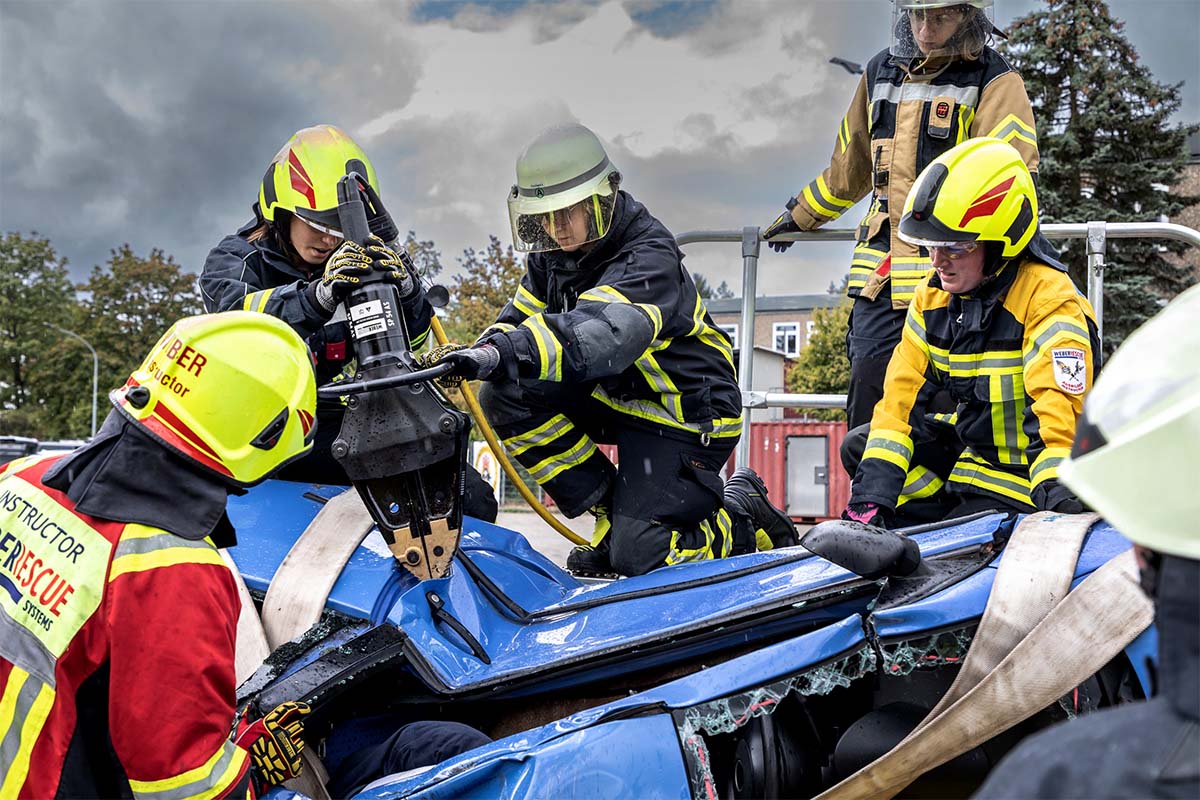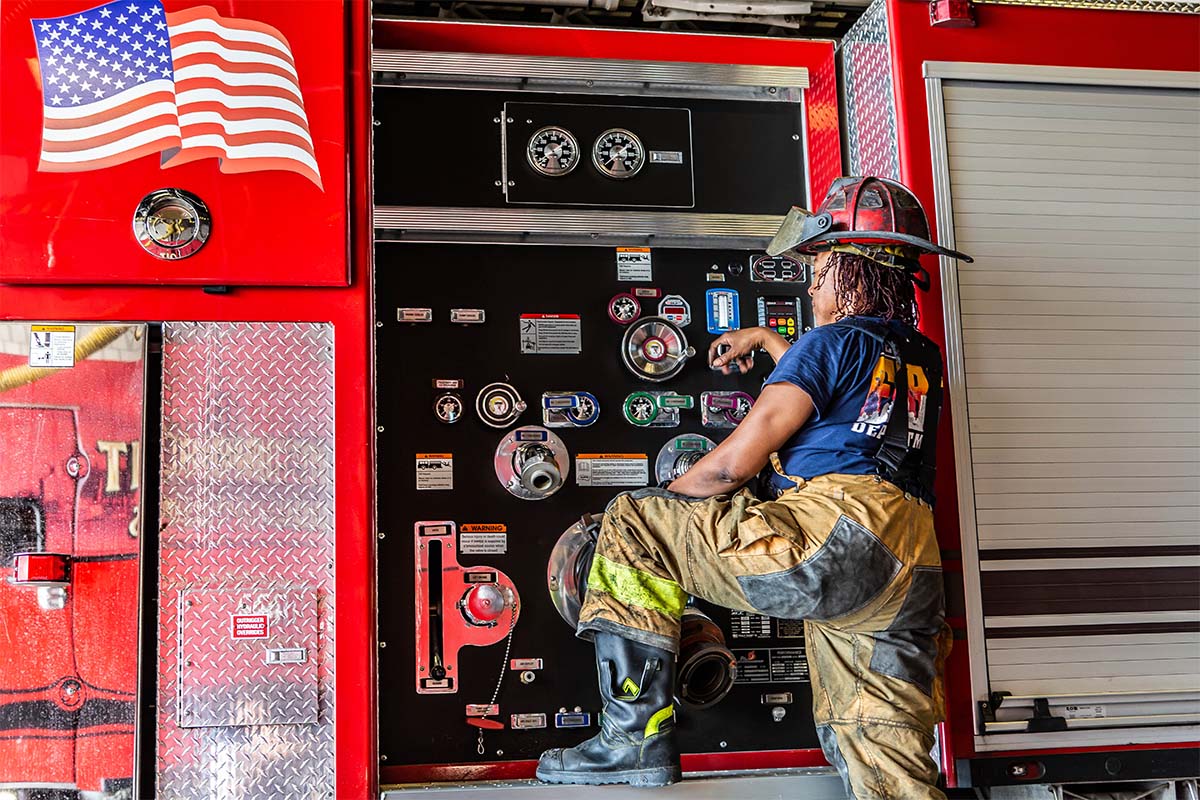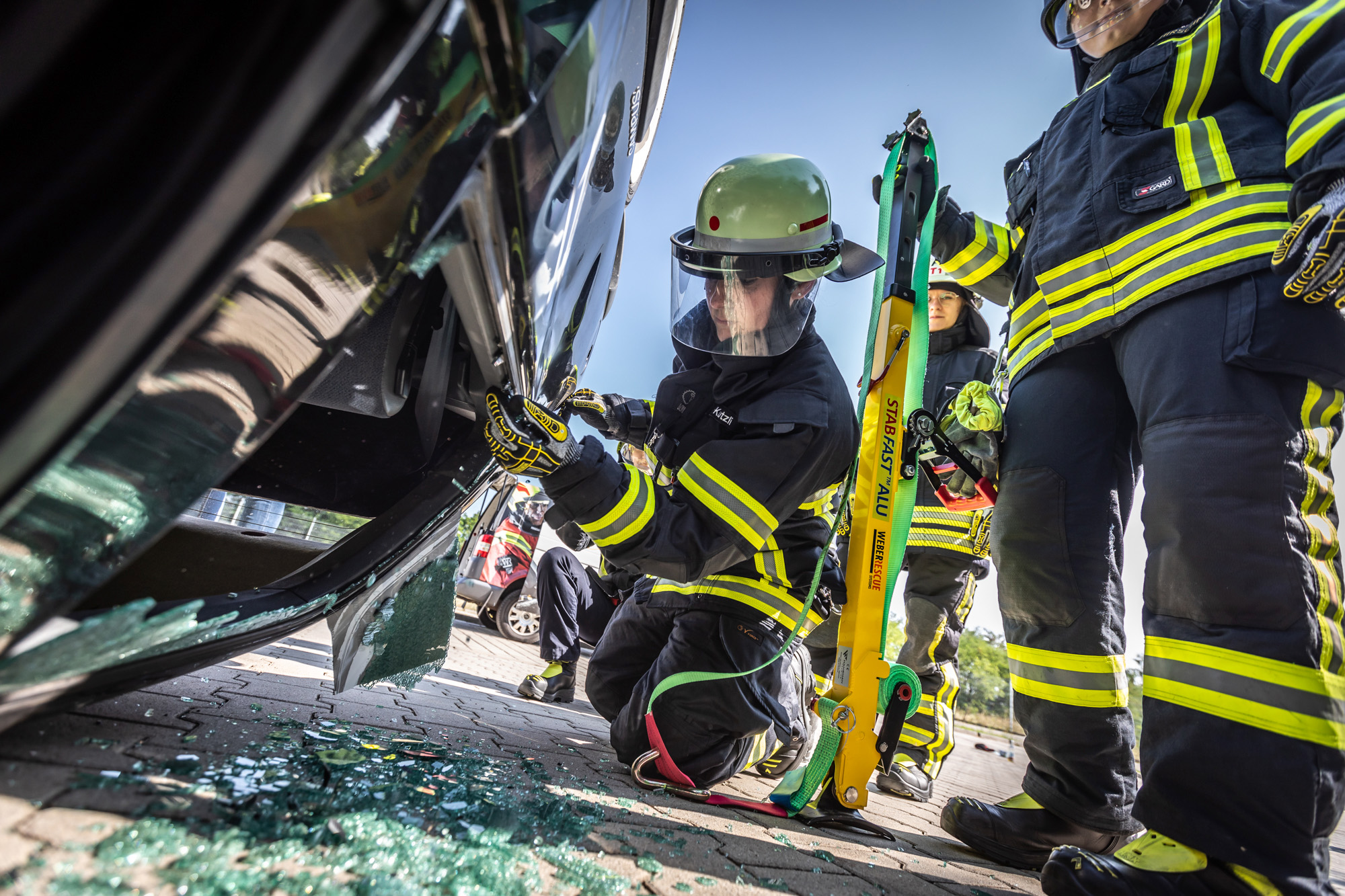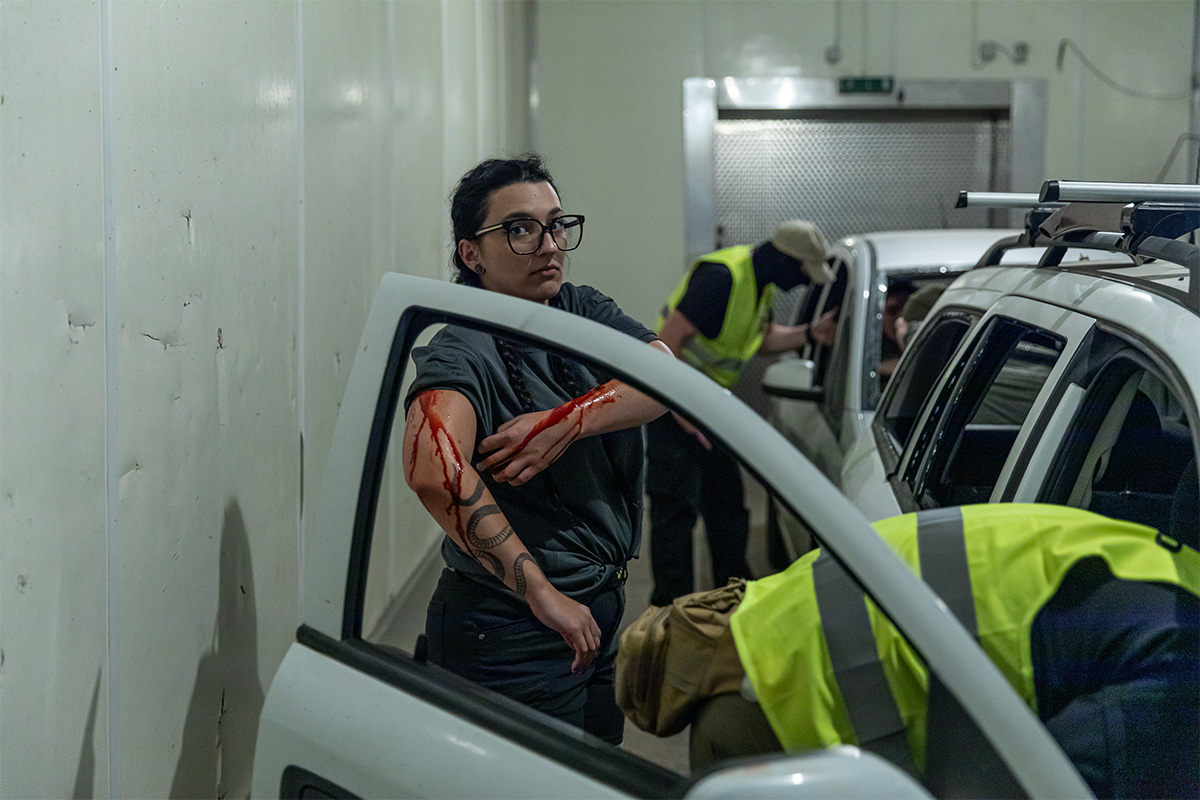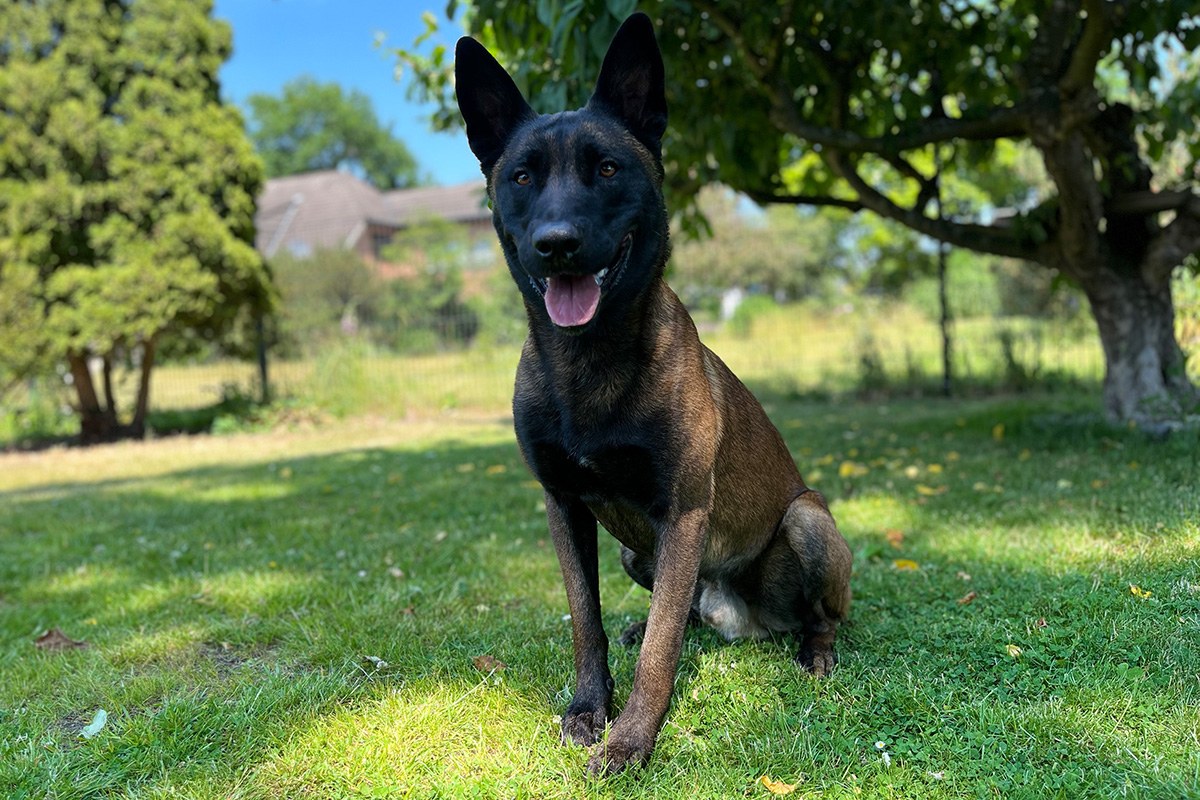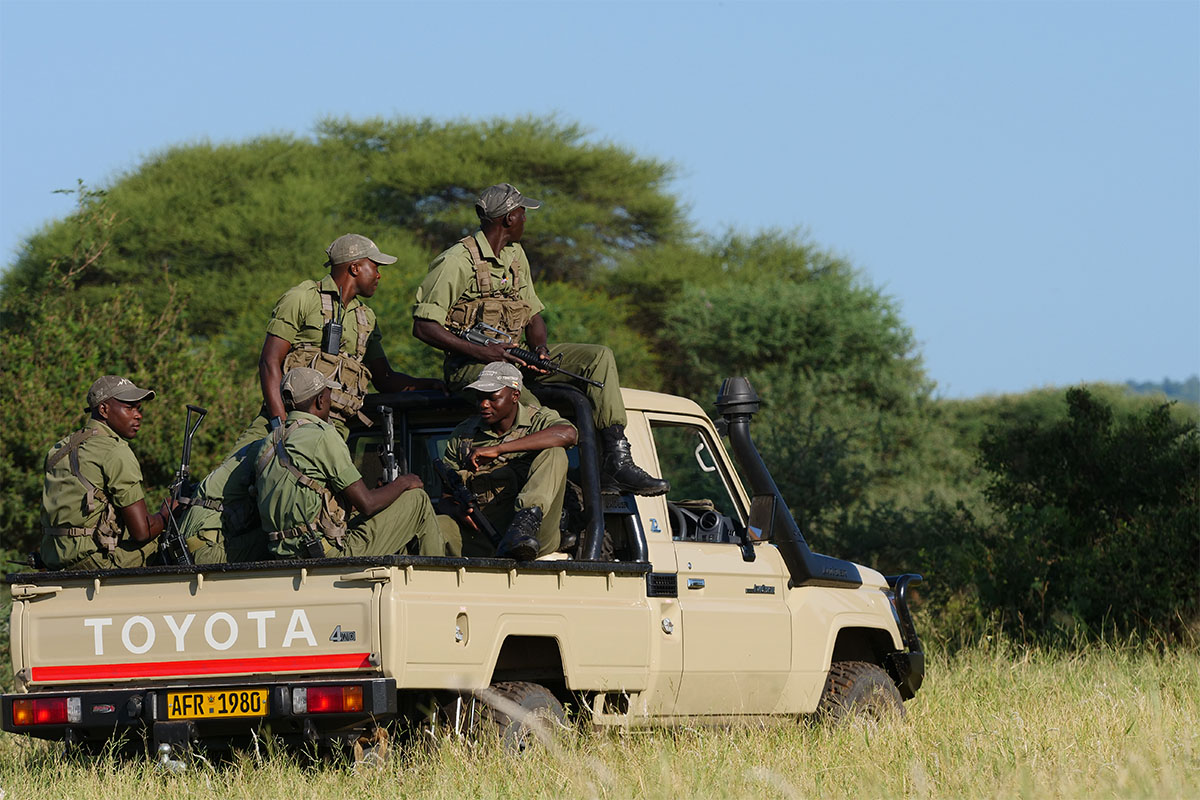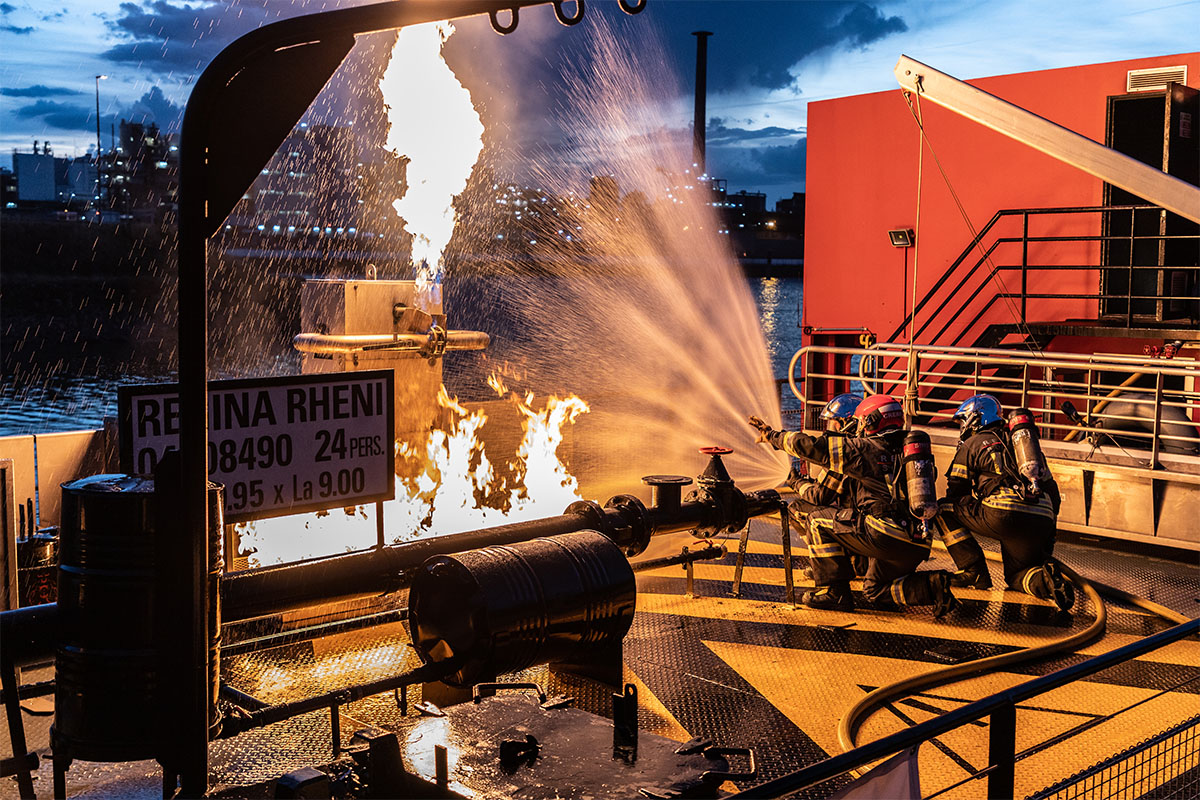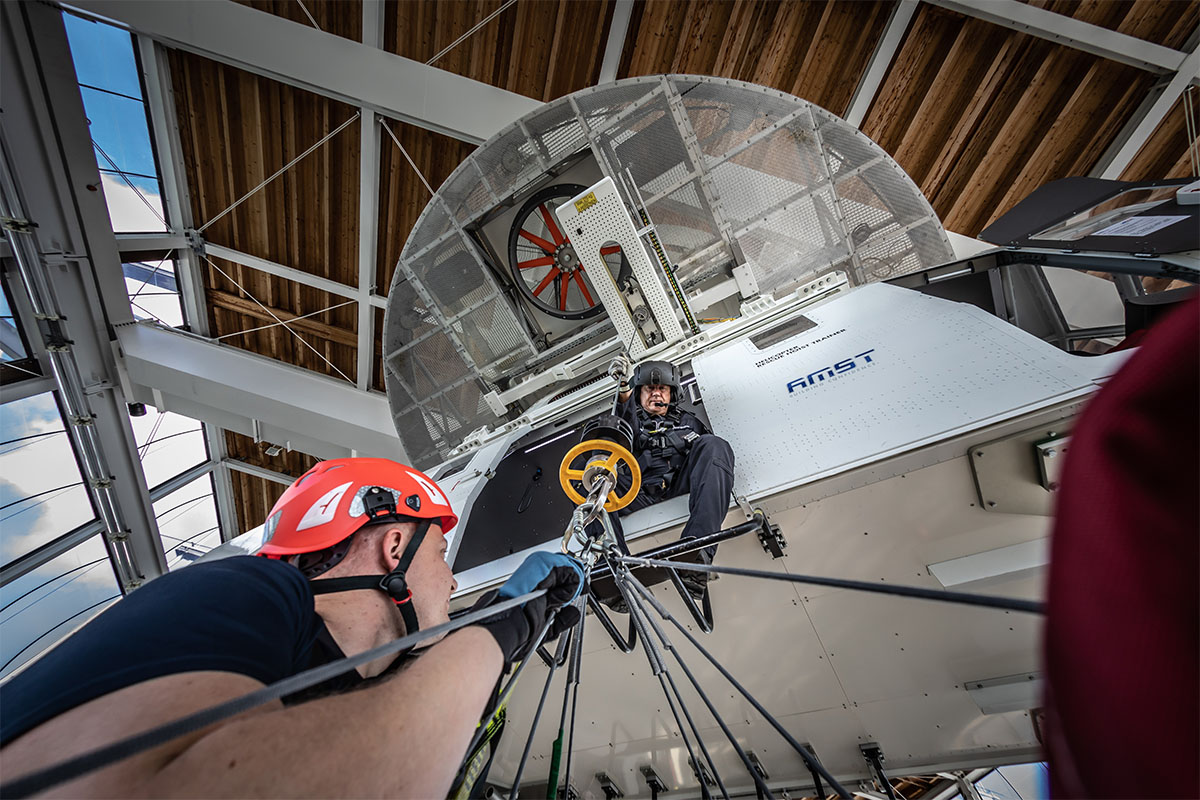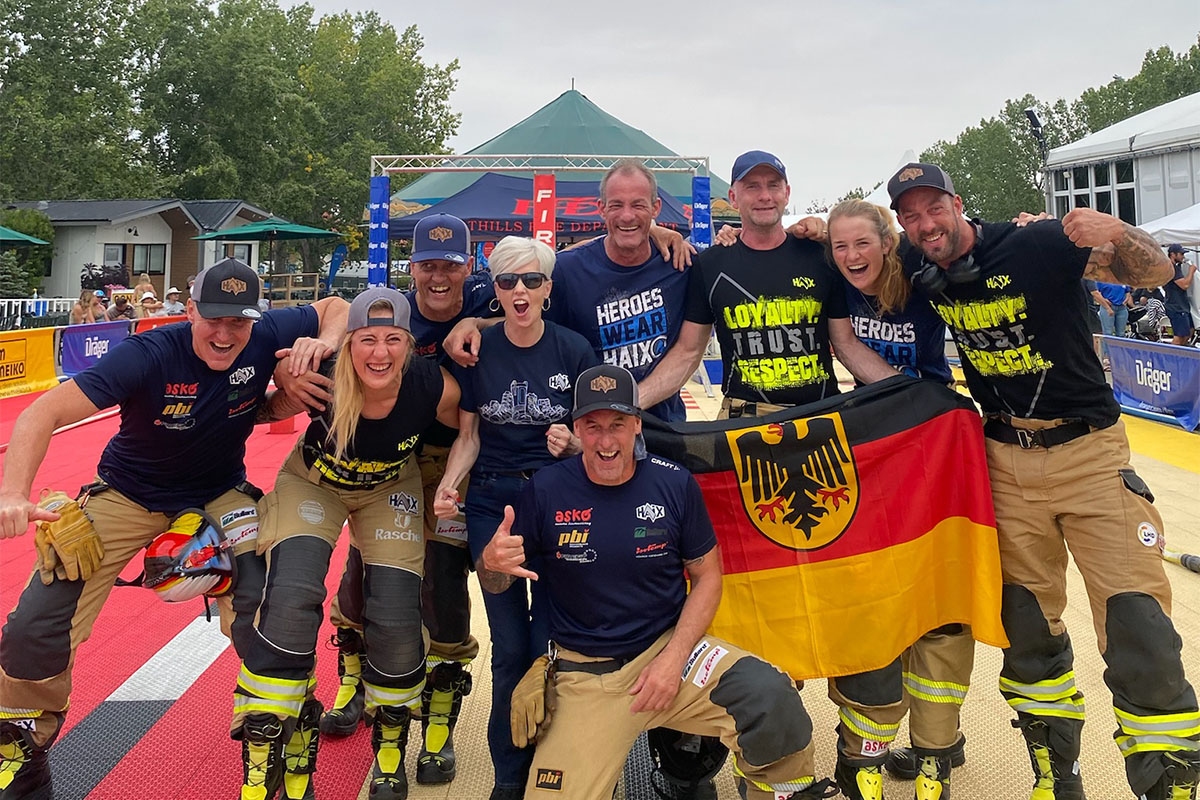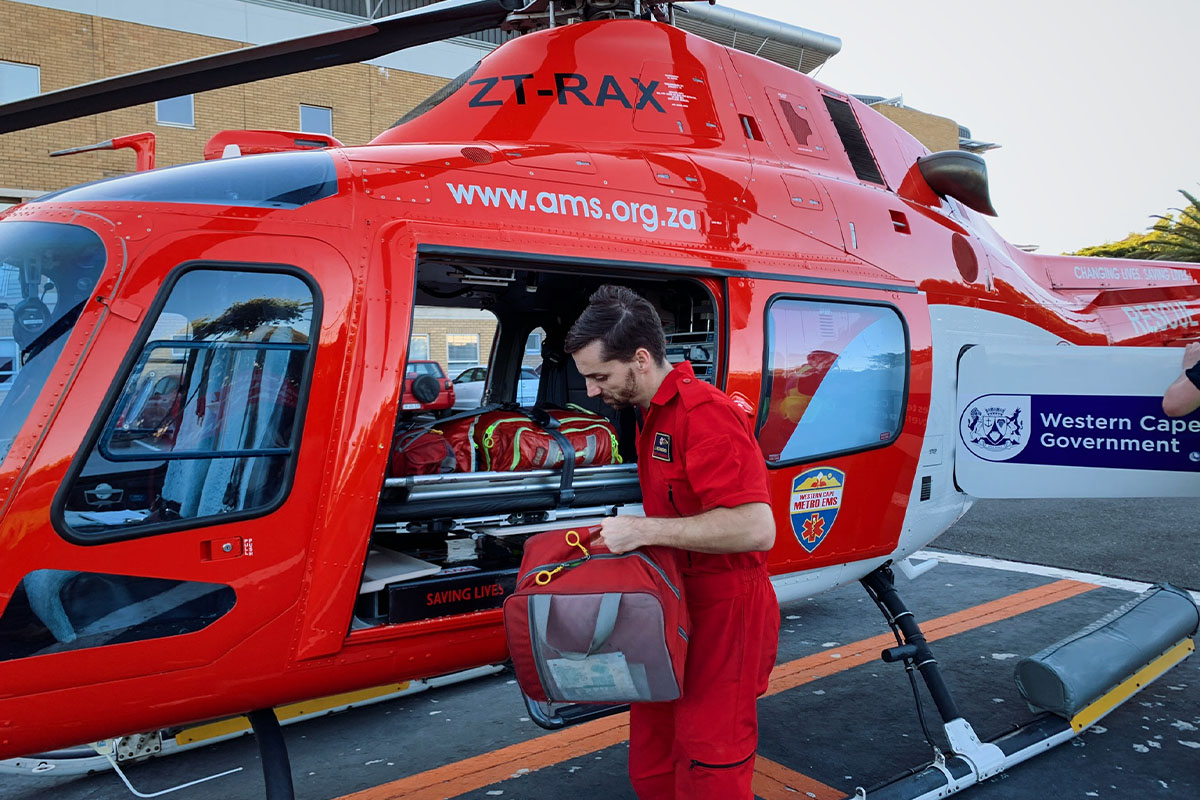Women firefighters train in THL training traffic accident operations
Emergency call “Car accident”: The car has flipped; the firefighters can only guess how many times. It’s upturned. Its driver is hanging by their seat belt. Everything is upside down, and the first responders have to adapt to the confusing situation as they arrive.
This could easily be a real duty in a countryside ditch or a highway embankment. Today it is a practice scenario, part of the women’s training course in technical aid. It’s a tough program: 25 women from the fire brigade and the Federal Agency for Technical Relief attended the Training Center “Retten & Helfen” in Mosbach on September 9 and 10 to train rescue techniques for car accidents with HAIX and WEBER RESCUE. In 2021, the training course already took place with 14 participants.
Maike is one of them: The 19-year-old volunteer firefighter from Baden-Württemberg arrives with mixed feelings at the firefighters rescue training. This is her first opportunity for intensive practice with the technical equipment since her modular basic training. But what is it going to be like in a women’s group where she doesn’t know anyone? After all, back home, there are only two women in a mostly male group. What backgrounds and experiences will the others bring to the table? Despite all the questions in her head, Maike is curious and excited about the program.
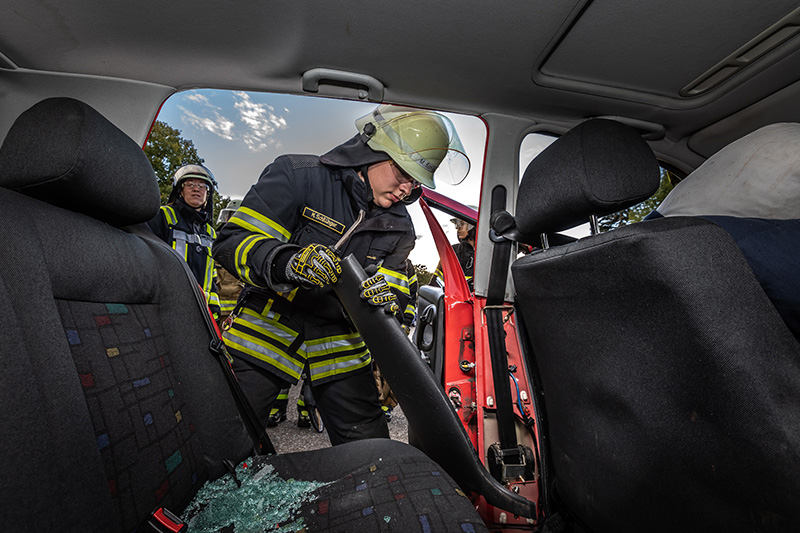
A cheat sheet in the tank cap
The first assessment of the situation is key. It doesn’t matter which way the car is facing. Maike learns that it’s possible to free people from a crashed car quickly and gently. It doesn’s matter whether the vehicle is on its roof, side or tires, or whether it’s hit an obstacle. A range of seemingly minor indicators reveal the right tactic. For example, a small sticker inside the tank cap can yield a lot of information, like: What type of fuel does the car take? Does it run on diesel or gasoline? Or, how many people could the vehicle carry? After all, a toy in the car might even hint to a child being onboard.
During the rescue training, while the vehicle is still overturned, the firefighters use wooden blocks to keep it in place and then remove the trunk lid. This then gives one firefighter access to the car, where she can speak with the driver. The team then remove coffee mugs, a backpack, a coat and other personal items that have ended up on the floor – or rather, ceiling – of the car during the collision. After that, they cut out the headrests and back seat, and use spreaders to widen the gap.
An all-female firefighters rescue training
The coaches closely watch their protégées’ efforts during the firefighters rescue training, helping them to handle the equipment and offering hints as to how they could get closer to one spot or another. Meanwhile, Maike eagerly takes notes for later revision. When it comes to the operational tactics, however, the women develop their own approach. They try every trick in the book to see what works and what doesn’t.
An all-female rescue team – quite rare in the fire brigade. In this case, the trainees all have different levels of experience: Maike, who has just completed her modular basic training, is operating the scissors, spreader and cylinders for the first time today. But she is working side by side with accomplished leaders. They complement each others expertise and personalities, with everyone learning something new today.
Today’s participants have come from all over the German-speaking region, with some based as far away as Austria or Northern Germany. Together, they develop solutions for the practice mission. Everyone gets on well, and the atmosphere is fantastic. The women all agree: “We may not quite have the sheer physical strength of a large man, but we’re just as skilled at freeing people from car wrecks and helping them.”
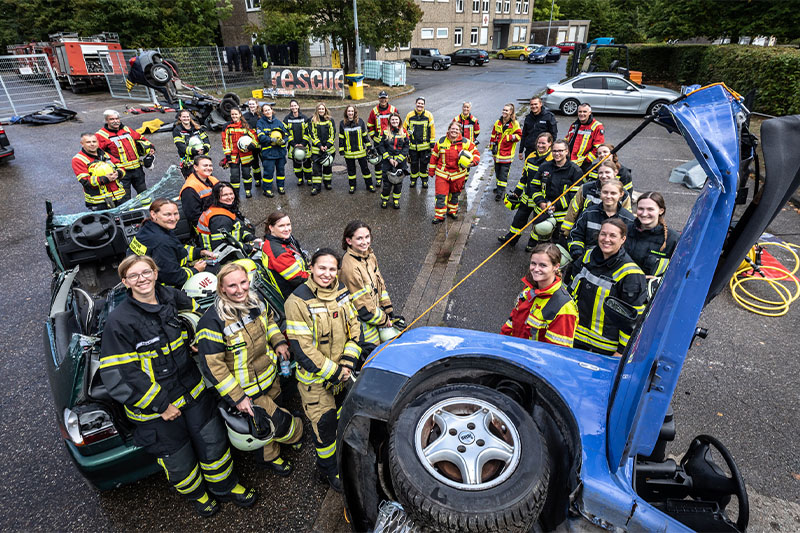
Teamwork is everything
The first responders have carved out a path to the driver, but the small car is so crushed that there simply isn’t enough space to get to them. The firefighters have to use a hydraulic rescue cylinder to force the floor of the vehicle, still on top, upwards to give the trapped driver space. Teamwork is everything when on duty: The group tackles the task in unison, too.
There is no one-size-fits-all solution when it comes to rescuing patients. The best approach always depends on the situation. By the end of the day, Maike’s notepad is covered in notes. For example: Some of the equipment from a fire truck can be repurposed. In this exercise, the roof of the vehicle is swiftly transformed into a makeshift stretcher to pull the patient straight out of the car. Once in the rescue position, he is supported by a hammock made of fire hoses.
Two more practice accidents await Maike and her teammates after they complete this scenario. After more than ten intense hours of technical training, she recaps: “It’s been awesome!” Scissors, spreader, cylinder, reciprocating saw – she got to use them all. Although she hasn’t been called out on duty to a real car accident yet, she feels well prepared and looks forward to passing her knowledge on during the next exercise.
